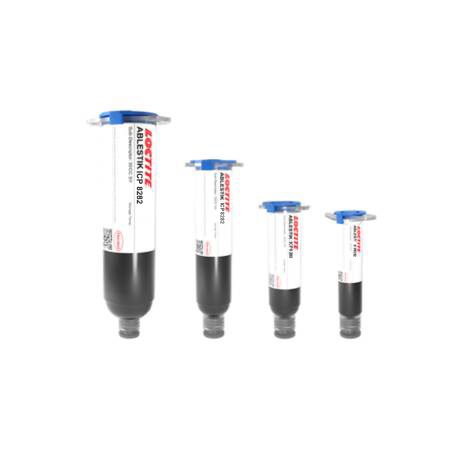LOCTITE ABLESTIK ICP 8282
- Snap cure
- High flexibility
- High speed print
Product Description
LOCTITE ABLESTIK ICP 8282 is an electrically conductive acrylate adhesive designed for applications where fast cure is required. This single component, snap cure material is ideally suited for high throughput photovoltaic print processes and applications where high adhesion strength is required.
LOCTITE ABLESTIK ICP 8282 achieves low and stable contact resistance on noble metallisation during reliability testing. It has low silver content that reduces its density making it a very cost effective conductive material compared to similar fast cure products such as CA 3556HF. It is typically used for flexible interconnects in photovoltaic and solar panel shingle applications and also on stencil printing processes that need to print at high speeds and high volumes.
Snap Cure
- 10 to 15 seconds @ 150°C
Technical Specifications
| General Properties | |||||
| |||||
| Specific Gravity Specific Gravity Specific gravity (SG) is the ratio of the density of a substance to the density of a reference substance; equivalently, it is the ratio of the mass of a substance to the mass of a reference substance for the same given volume. For liquids, the reference substance is almost always water (1), while for gases, it is air (1.18) at room temperature. Specific gravity is unitless. | 1.9 | ||||
| Physical Properties | |||||
| Thixotropic index Thixotropic index Thixotropic Index is a ratio of a material s viscosity at two different speeds in Ambient temperature, generally different by a factor of ten. A thixotropic material s viscosity will decrease as agitation or pressure is increased. It indicates the capability of a material to hold its shape. Mayonnaise is a great example of this. It holds its shape very well, but when a shear stress is applied, the material easily spreads. It helps in choosing a material in accordance to the application, dispense method and viscosity of a material. | 2.6 | ||||
| Viscosity Viscosity Viscosity is a measurement of a fluid’s resistance to flow. Viscosity is commonly measured in centiPoise (cP). One cP is defined as the viscosity of water and all other viscosities are derived from this base. MPa is another common unit with a 1:1 conversion to cP. A product like honey would have a much higher viscosity -around 10,000 cPs- compared to water. As a result, honey would flow much slower out of a tipped glass than water would. The viscosity of a material can be decreased with an increase in temperature in order to better suit an application | 28,400 mPa.s | ||||
| Mechanical Properties | |||||
| |||||
| Electrical Properties | |||||
| Volume Resistivity Volume Resistivity Volume resistivity, also called volume resistance, bulk resistance or bulk resistivity is a thickness dependent measurement of the resistivity of a material perpendicular to the plane of the surface. | 3.7x10-3 Ohms⋅cm | ||||



